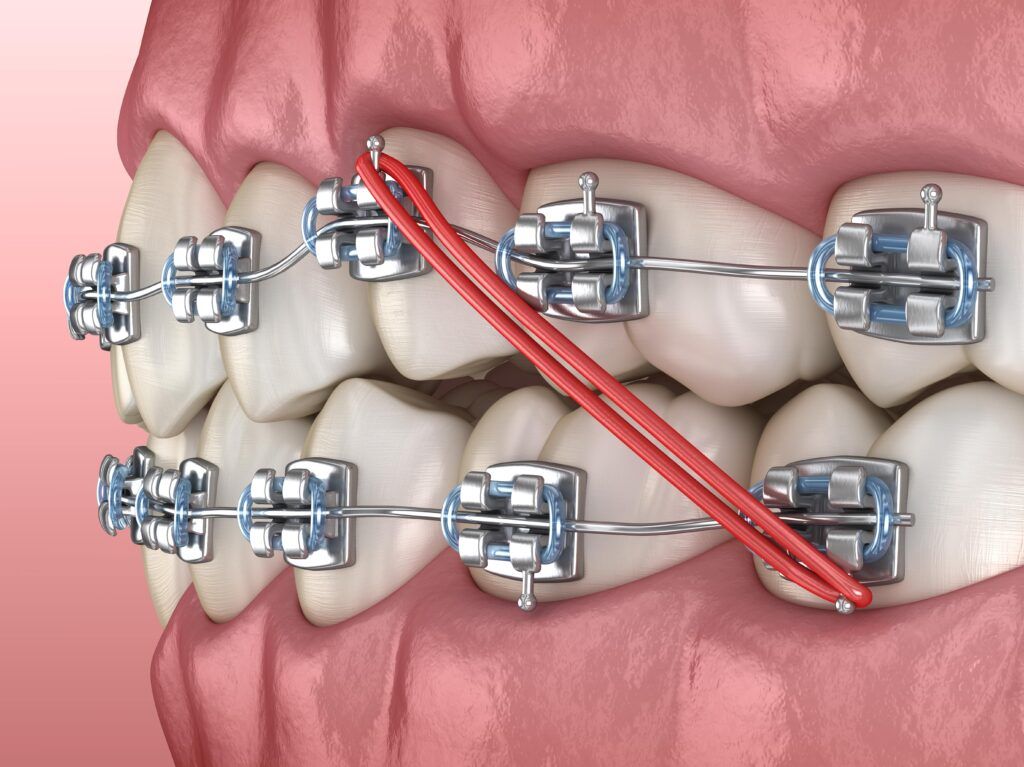Locating the Right Cumming Orthodontist for Your Braces and Aligners Demands
Locating the Right Cumming Orthodontist for Your Braces and Aligners Demands
Blog Article
Comprehensive Guide to Orthodontics Procedures for Remedying Oral Misalignments
In the realm of orthodontics, the trip to achieving a completely straightened smile involves a myriad of procedures customized to deal with oral misalignments. From conventional dental braces to undetectable aligners and even medical options, the field of orthodontics uses a variety of services to attend to differing levels of dental irregularities. Comprehending the ins and outs of each treatment, including their devices, advantages, and prospective downsides, is important in making notified choices regarding one's orthodontic therapy. As we browse with the extensive guide to orthodontic procedures for fixing dental misalignments, the intricate information of each technique will certainly unfold, dropping light on the path toward a useful and unified oral placement.
Orthodontic Procedures Introduction

Regular modifications and tracking are critical components of orthodontic treatment to ensure progress is on track and to make any type of required modifications along the method. By undergoing orthodontic procedures, people can not only achieve a straighter smile but also improve their general oral health and feature.
Conventional Dental Braces: Exactly How They Function
When taking into consideration orthodontic treatments for dental imbalances, traditional dental braces stand out as a tried and true method for fixing teeth positioning. Typical braces are composed of braces, cords, and bands that function with each other to use constant stress on the teeth, gradually moving them right into the preferred placement.
As stress is applied to the teeth through the braces, the bone surrounding the teeth is reshaped to support the new tooth positions. Patients will certainly require regular adjustments at the orthodontist's office to make certain the dental braces continue to use the correct stress for effective teeth motion.
Unseen Aligners: Pros and Disadvantages
Unnoticeable aligners use a discreet and convenient choice to typical dental braces for dealing with oral misalignments. These clear, customized trays are practically unnoticeable when worn, making them an appealing alternative for people seeking a more aesthetically pleasing orthodontic therapy. Among the main advantages of unseen aligners is their removability, permitting for much easier upkeep of oral health compared to conventional braces. Individuals can remove the aligners prior to eating or brushing their teeth, lowering the danger of food getting embeded the device and streamlining the cleaning process.

Surgical Orthodontic Options
Surgical interventions in orthodontics present viable alternatives for resolving intricate oral imbalances that might not be properly resolved through traditional orthodontic treatments. While invisible aligners and look what i found traditional braces can correct several orthodontic concerns, particular instances call for medical intervention to achieve optimal outcomes. Surgical orthodontic choices are commonly advised for serious malocclusions, considerable jaw inconsistencies, and cases where the underlying bone framework requires modification to attain correct positioning.
One common medical orthodontic treatment is orthognathic surgical treatment, which involves repositioning the jaws to remedy practical issues such as trouble talking or chewing. This surgical procedure is often executed in cooperation with an orthodontist who helps straighten the teeth before and after the treatment. Surgical orthodontics may also involve treatments to subject impacted teeth, get rid of excess gum cells, or improve the jawbone to produce an extra harmonious face profile.
Prior to thinking about surgical orthodontic alternatives, clients undertake a thorough examination to identify the need and potential advantages of such interventions. orthodontist. While surgical procedure may appear challenging, it can dramatically improve both the feature and aesthetic appeals of the smile in cases where traditional orthodontic therapies fall short
Retainers and Post-Treatment Care

Failure to comply with post-treatment care instructions can result in regression, where the teeth progressively relocate back in the direction of their initial settings. Constant retainer wear, great oral hygiene, and normal oral exams are essential for maintaining the results attained via orthodontic surgical procedure and making certain the lasting security of the remedied oral positioning.
Verdict
Finally, orthodontic treatments provide various options for fixing oral misalignments. Standard braces use steel braces and wires to change teeth into proper placement. Undetectable aligners supply a more very discreet option but might not be appropriate for all situations. Surgical orthodontic options are readily available for a lot more severe imbalances. Retainers are frequently used post-treatment to keep the new placement. In general, orthodontic procedures can efficiently enhance oral health and aesthetic look.
As we navigate via the detailed guide to orthodontic treatments for correcting dental misalignments, the elaborate information of each method will unravel, shedding light on the path towards a unified and functional oral alignment. - orthodontist
One of the most typical orthodontic therapies is the usage of braces, which consist of metal braces and wires that apply gentle pressure to progressively change teeth into the desired setting.When considering orthodontic treatments for dental imbalances, conventional dental braces stand out as a time-tested method for remedying teeth placing. In addition, undetectable aligners might not be ideal for intricate orthodontic issues that require more significant teeth motion, as they are normally advised for mild to moderate cases. Retainers are custom-made orthodontic devices designed to hold teeth in their fixed settings after the completion of orthodontic treatment.
Report this page